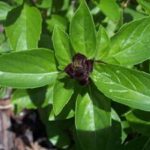When we first moved to Florida in 1981, I was amazed at the abundance of produce, not to mention all the peculiar fruits and vegetables that were available, even at the regular grocery stores. Carambolas were my first experiment. Key Limes introduced me to Key Lime Pie. We ate so many strawberries that we got bored with them. Avocados were four for a dollar. You didn’t have to buy lemons, grapefruits, bananas or oranges. You either picked them off your own trees or the neighbors overloaded you with their extras.
Then I discovered plantains. I thought they were just a big banana. What a nightmare. What a waste of money. The problem was that I was expecting a sweet banana, a dessert banana. The kind of banana I’d been slicing into my cereal for 25 years. The kind you make pudding and splits out of. The plantain is also banana, but it’s known as a cooking banana.
I wanted to know more about this poser. Why was the plantain extraordinarily popular in Asian, African, Latin and Caribbean cooking? So I did some research and this is what I found out.
How to Cook Plantains: The Nature of the Beast
The plantain is firmer and lower in sugar than the regular banana. It can be used at every stage of its ripeness. It’s adaptable to all manner of cooking: frying, steaming, boiling, baking and grilling. Plantains are high in potassium (just like regular bananas), as well as magnesium, Vitamins A and C. It is high in fiber and low in sodium and cholesterol. It can be treated as an entrée, a side vegetable and even a dessert. Its bland taste adapts well to all kinds of ethnic flavors.
How to Cook Plantains: What’s the Difference
Actually, there is not a lot of difference between the plantain and the banana except in the sweetness.
The plantain is longer and therefore feels heavier. The skin is thicker. In international cuisine, it’s mostly treated like a vegetable. When a dessert banana reaches the stage where all the skin is black; that translates to “rotten” and you might as well throw it way. When a plantain turns black, it’s just getting sweet.
How to Cook Plantains: Choose the Right Plantain
The key to success when learning how to cook plantains is to choose plantains that are at the right stage of ripeness for your recipe.
When a plantain is green, it is unripe and starchy, but still edible if treated right. Think of it like a potato. Its best either boiled or fried.
As the plantain starts to ripen it will turn yellow with brown flecks. The starches are gradually being converted to sugar. While this plantain is indeed sweeter that the green ones, it still needs to be cooked.
When the plantain looks it’s very worst, it’s at its sweetest. They can be peeled and eaten like the regular bananas we’re accustomed to. The skin gets very black, and sometimes even a little moldy, but that does not affect what’s inside the peel.
How to Cook Plantains: Peeling a Plantain
Peeling a plantain is sticky business. The juice can stain your skin and your clothing. Start by cutting off both ends of the plantain. The skin is very thick. Using the tip of a very sharp knife, slice through the skin from end to end along all four ridges. At this point, you can start working your fingers under the skin, along the length of it, separating the fruit from the peel. Or, you can drop it in very hot water that has been generously salted. Let it sit for a few minutes, and then continue to peel. The hot water will make the skin more pliable.
When a plantain skin has reached the very black stage, it will peel like a banana.
How to Cook Plantains: Boiling
When the plantain is very green to yellow, substitute it for potatoes. Boil the peeled plantain in water for about 30 minutes or until tender. Mash them up. For every two plantains, add two tablespoons of cream cheese, 1 tablespoon of unsalted butter and 1/3 – ½ cup of milk or better yet, cream. Sprinkle with salt and freshly ground black pepper to taste. No need for gravy.
How to Cook Plantains: Frying
If you are trying to diversify your family’s palate, give tostones (fried plantains) a try.
Peel the plantains and cut into 1 inch thick rounds. In a bowl, add a couple of cloves of crushed garlic – or a couple of tablespoons of finely chopped onion, 1 teaspoon of salt, the plantains and enough warm water to cover. Let them soak.
In a large, heavy bottomed skillet pour approximately ½” of vegetable oil. Heat oil to 325 degrees. Remove the plantains from the water and dry thoroughly with a towel. Don’t throw away the water. Carefully place the plantains in the hot oil and fry for 1- 1½ minutes, turning occasionally. Fry until the plantains are golden.
Remove the plantains from the oil onto paper towels. Using a spatula or the back of a metal measuring cup, squash the plantain until it is about ½” thick. Return the squashed plantain to the bowl of your saved soaking water for a few seconds. Dry thoroughly again and back into the oil for a few more minutes. Drain on paper towels. Salt and sprinkle with freshly ground pepper.
How to Cook Plantains: In the Oven
Plantains can be roasted just like any of our more traditional vegetables such as potatoes, carrots and squash. This recipe works best with green or yellow plantains. While the oven is preheating to 350 degrees, peel the plantains and place in a baking dish or roasting pan. Drizzle with olive oil and sprinkle with salt and freshly ground pepper. If you’re in the mood for something a little zesty, try seasoning with some grill seasoning, cayenne pepper, paprika, garlic or onion salt, paprika, cumin.
Roast the plantains in the oven for at least 10 minutes, depending on their stage of ripeness. Roast until a fork or knife sleeps easily into the fruit.
How to Cook Plantains: On the Grill
Slice peeled plantains in half lengthwise and place on an oiled grill rack directly over medium heat. You’ll need to grill them for four or five minutes on each side, until they are tender. Covering with a grill lid can speed the cooking. Once the plantain is grilled, you can continue with either a savory or a sweet recipe. But personally, there’s nothing like butter and brown sugar on a freshly grilled plantain, with just a pinch of cinnamon or allspice.
How to Cook Plantains: For Dinner and Dessert?
You betcha! Once you’ve learned how to cook plantains, you’re going to start buying them all the time. If you’ve managed to hold on to a few until they’re fully ripe, with skins as black as tar, you should try making a version of the New Orleans favorite, Bananas Foster.
Start with three or four plantains. Peel them and cut them in half lengthwise and then again vertically. Set aside. In a heavy skillet over low heat, melt ¼ cup of unsalted butter. Add in ¾ cup of dark brown sugar (regular brown sugar will do) and ¼ cup of water. Add two teaspoons of vanilla extract, ¾ teaspoon of ground cinnamon and a pinch of salt. Take the pan off the heat and add ¼ cup of rum. Continue to reduce the syrupy glaze until it starts to thicken and coats the back of a spoon. Add the plantain quarters. Using tongs, turn the plantains until all sides are glazed with the sugar/rum mixture and the plantains are hot, usually about 1-2 minutes.
To serve, place two or three plantain quarters onto a pretty dessert plate. On top of the plantains, put a LARGE scoop of french vanilla ice cream. Over the ice cream, drizzle a couple of tablespoons of the warm sauce from the skillet.
How to Cook Plantains: For Bambinos
All over the world, the very ripe plantains are used as baby food, just like we use regular bananas here in the States. The plantain is mashed with a half a pinch of salt. Many moms believe that the plantain is much easier for a baby to digest than the banana.
When you bring plantains home from the store, keep them at room temperature and out of direct sunlight. Once the fruit has reached the desired stage of ripeness, you can stick it in the refrigerator for a few days until you’re ready to use it.
Now that you know how to cook plantains (or plantanos) I hope you incorporate them into all your recipes. No matter what your mood: Cuban, Puerto Rican, Caribbean, Indonesian, Phillapino or Mexican, whether you’re cooking inside or out, savory or sweet, think of the plantain as a versatile workhouse in your international kitchen.




